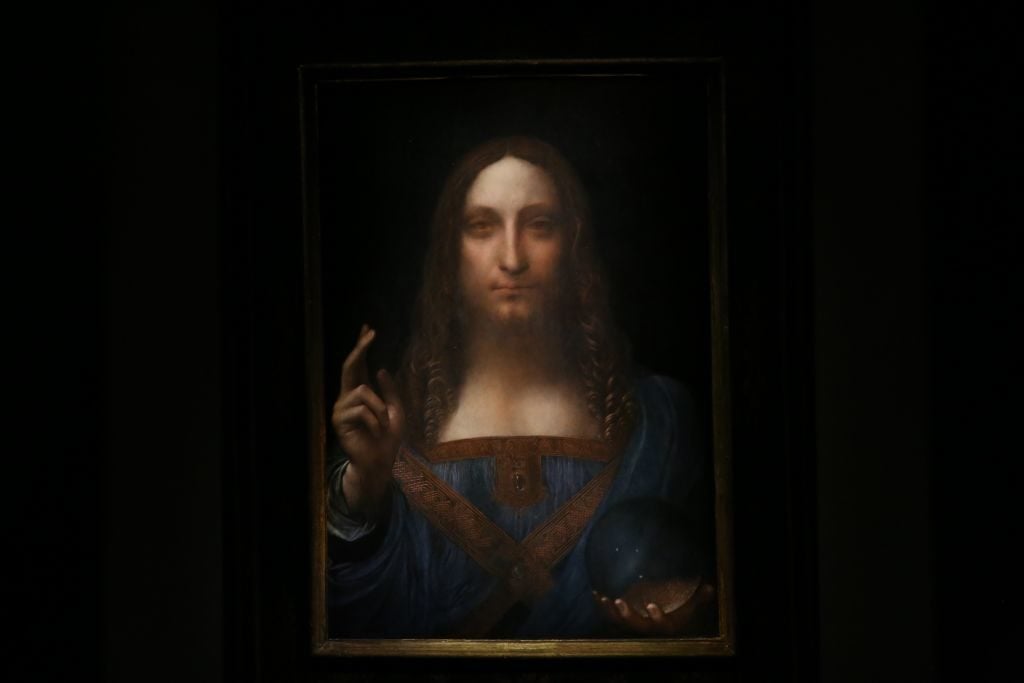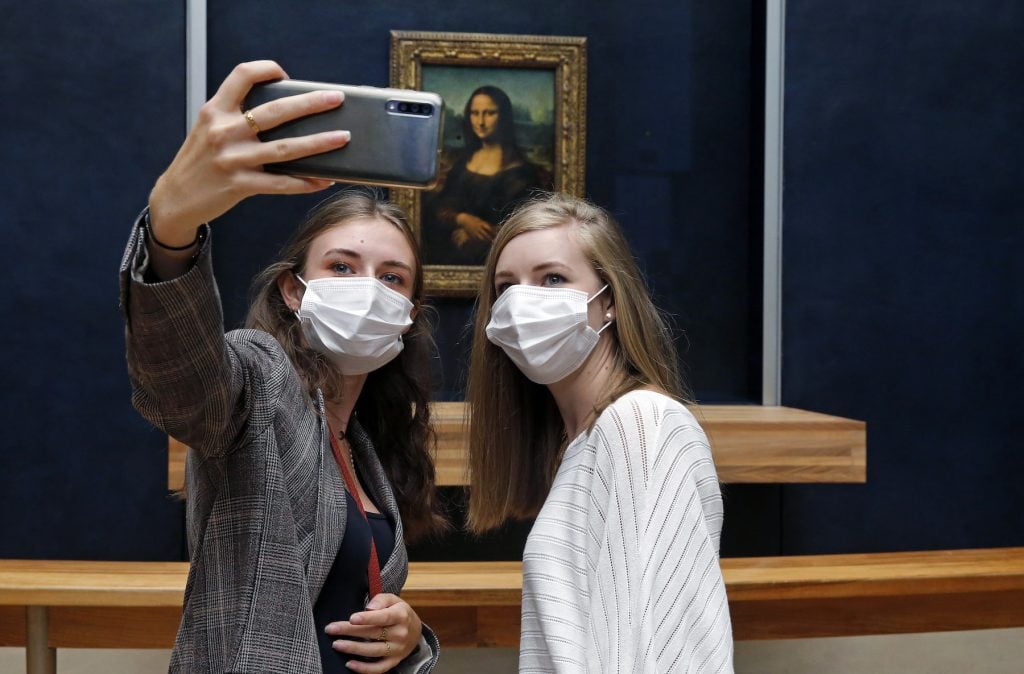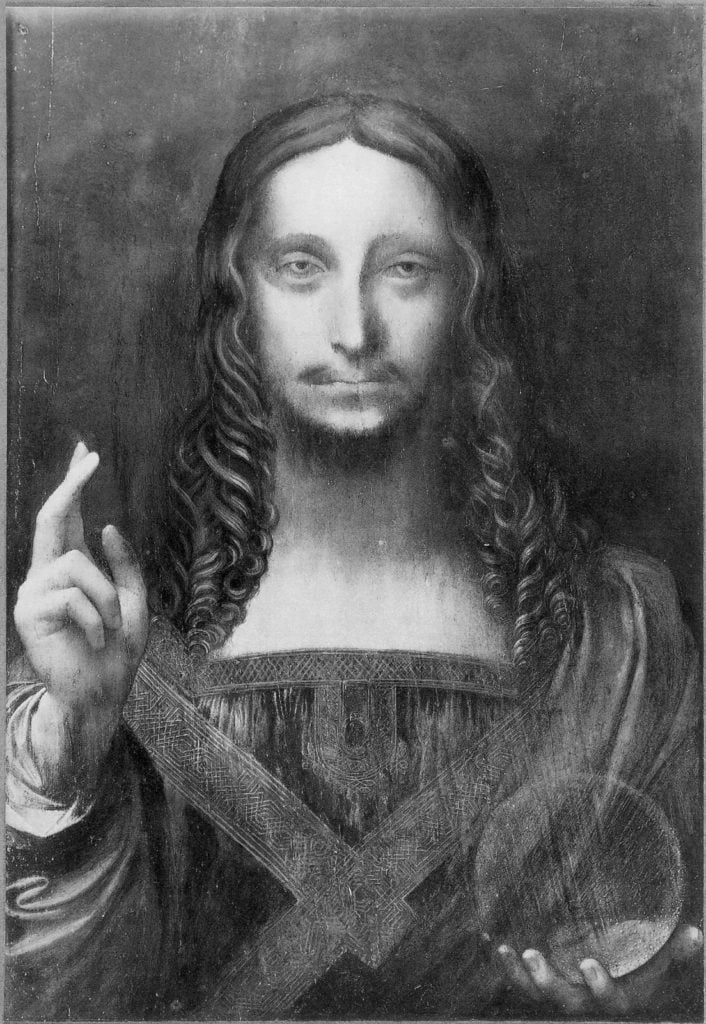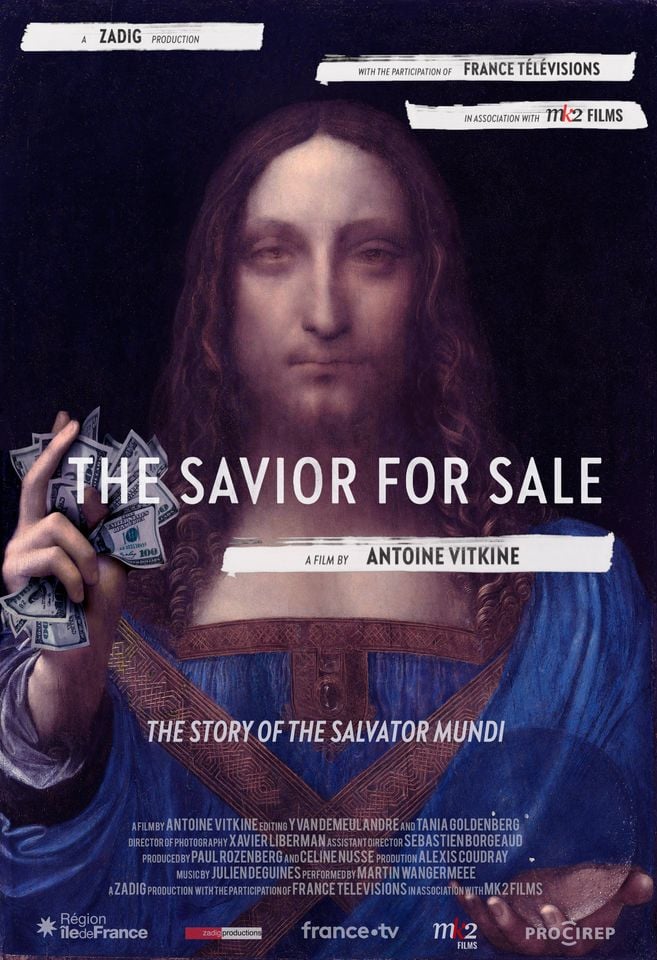Art & Exhibitions
Saudi Arabia Refused to Lend the ‘Salvator Mundi’ to the Louvre Because They Wouldn’t Show It Next to the ‘Mona Lisa,’ a Report Says
The report contradicts a claim put forward in a new documentary.

The report contradicts a claim put forward in a new documentary.

Sarah Cascone

The plot thickens around the Salvator Mundi, the world’s most expensive painting, and the mystery of why the Louvre didn’t include it in its blockbuster 2019 Leonardo da Vinci exhibition.
A new documentary film, The Savior for Sale, which premieres tomorrow night on French television, claims that according to anonymous French officials, the museum refused to acquiesce to Saudi Arabian demands that the work be displayed as an autograph Leonardo after scientific testing determined that the artist merely contributed to the painting.
But a New York Times story now contradicts that claim. According to a Louvre report obtained by the Times, the museum didn’t doubt the work’s authenticity. The real issue is that Saudi officials demanded it be shown next to the Mona Lisa, which curators refused to allow.
“In general, the museum world, and the specialist art historians and curators in it, never really had any doubts about the painting’s authenticity,” dealer Robert Simon, who played a key role in the rediscovery of the work after it turned up at an estate sale in 2005, told Artnet News in an email.

Visitors wearing face masks take a selfie with the painting Mona Lisa by Leonardo Da Vinci at the Louvre museum. Photo by Chesnot/Getty Images.
“There have been a couple of outliers, of course, but most scholarly discussion has had to do with the date, patron, iconography, and workshop participation, if any,” he added.
The newly leaked report—from a planned Salvator Mundi book pulled from the Louvre’s gift shops when plans to exhibit the work fell through—would have confirmed the painting as an authentic Leonardo. The existence of the book was first reported by the Art Newspaper.
The Center for Research and Restoration of the Museums of France is said to have made that determination on the strength of a weeks-long forensic examination using fluorescent X-rays, infrared scans, and high-resolution microscopes in 2018.

State of Leonardo da Vinci’s Salvator Mundi before restoration. Image courtesy Christie’s.
“The results of the historical and scientific study presented in this publication allow us to confirm the attribution of the work to Leonardo da Vinci,” Jean-Luc Martinez, the Louvre’s president, wrote in the introduction.
The cancelled publication also identified the Saudi Culture Ministry as the painting’s owner. The Crown Prince of Saudi Arabia, Mohammed bin Salman, is widely understood to have purchased the work at Christie’s New York for a record-setting $450 million on 2017.
But a power struggle developed because the Louvre didn’t think it was a good idea to exhibit the painting next to the Mona Lisa. The Louve’s most famous painting was to remain on view apart from the rest of the Leonardo exhibition, in order to accommodate its regular crowds. What’s more, adding another major work to the gallery would have presented too big of a security challenge.
The Saudis ultimately withheld the painting, and the Louvre withheld its evaluation, which caused a storm of doubt about the work.
(A planned appearance at the Louvre Abu Dhabi was also cancelled, and the painting—not seen publicly since its sale—has been rumored to be aboard the prince’s yacht, the Serene.)

Antoine Vitkine’s The Savior for Sale will debut on French television on April 13. Image ©Zadig productions/FTV.
But Antoine Vitkine, the director of the new film, stands by his version of events, suggesting to La Tribune del’ Art that the book was produced as a contingency plan in case the government agreed to bow to Saudi demands that the painting be shown as authentic.
The museum has declined to comment on the issue.
“It is, of course, unfortunate that the painting was pulled from the Louvre exhibition, but that does not reflect poorly on the painting,” Simon said. “In fact, it probably just adds to the painting’s celebrity and allure, and will only generate more interest in it when it is eventually shown, wherever and whenever that might be.”